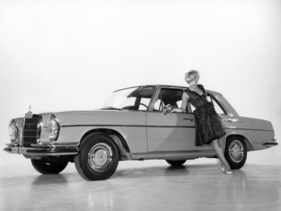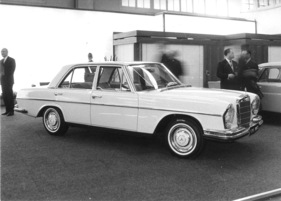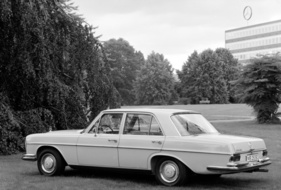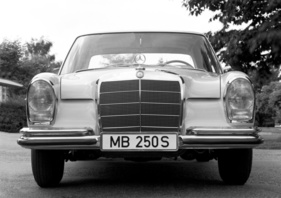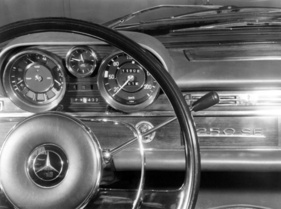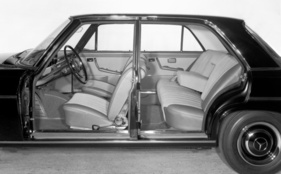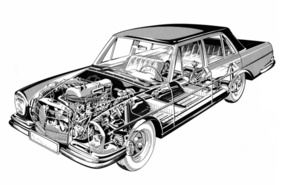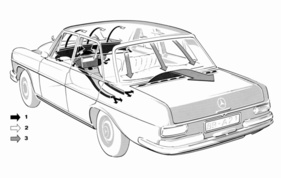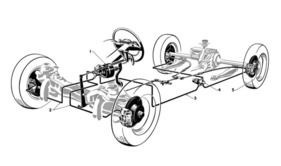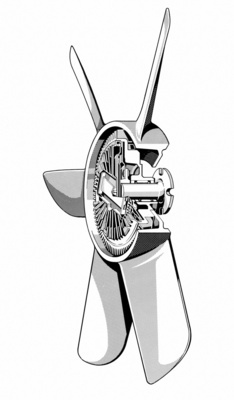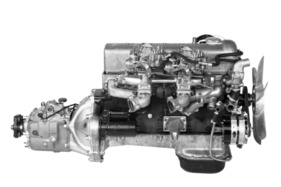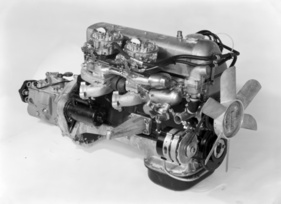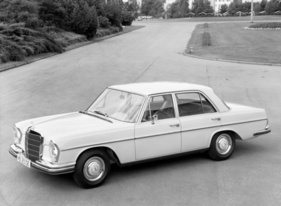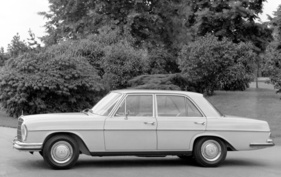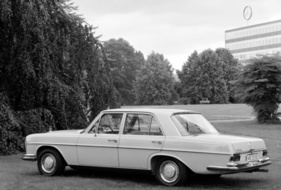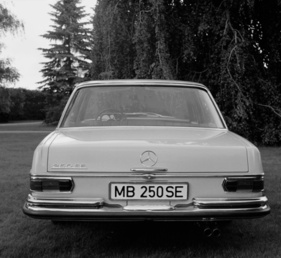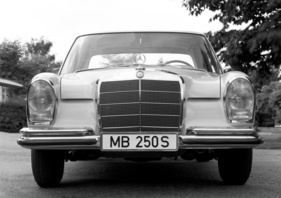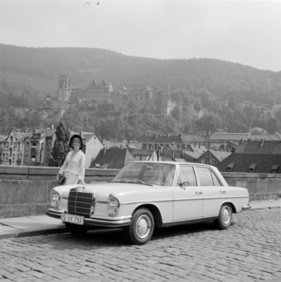Mercedes-Benz 250 S Automatic in the (historic) test - top position in automotive engineering
Summary
The predecessor was actually visually outdated just one year after its debut. Nevertheless, Daimler-Benz took until 1965 to iron the fashionable tail fins out of the dress of its top models. But it was worth the wait. The new Mercedes-Benz 250 S appealed with its elegant, understated lines and proved to be a comfortable top product - with a surprisingly sporty engine. This historical test report clarifies whether it harmonized with the automatic transmission.
This article contains the following chapters
- Turning away from the fashionable
- Playful operation
- Securely upholstered and well heated
- Surprisingly sporty engine
- Automatic: gain in comfort (almost) without loss of performance
- It now understeers
- Good, but not overwhelming brakes
- Comfortable without rocking
- Technical data & measurements
Estimated reading time: 18min
Preview (beginning of the article)
After five years without a change to the range, the time was ripe again last summer for a new model at Daimler-Benz. Following the trend towards larger and more powerful engines, the 2.2-liter engines were developed into 2.5-liter engines. A skilfully shaped body, whose dimensions were based on those of the previous models, was placed on a chassis that was only slightly revised. The resulting new 250 S and 250 SE models replaced the 220 SE as upmarket cars. The engine with some sporty features gave the 250 S excellent, sometimes even superior driving performance, which did not have to be bought at the expense of comfort. On the contrary, the noise level has been lowered somewhat and the suspension comfort slightly increased.
Continue reading this article for free?
Photos of this article

